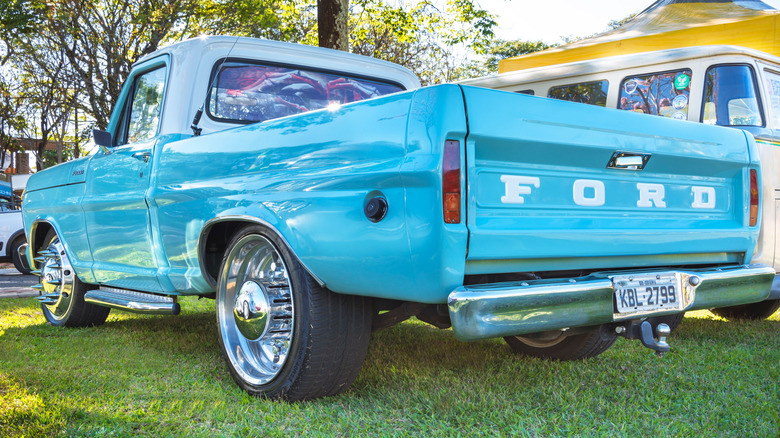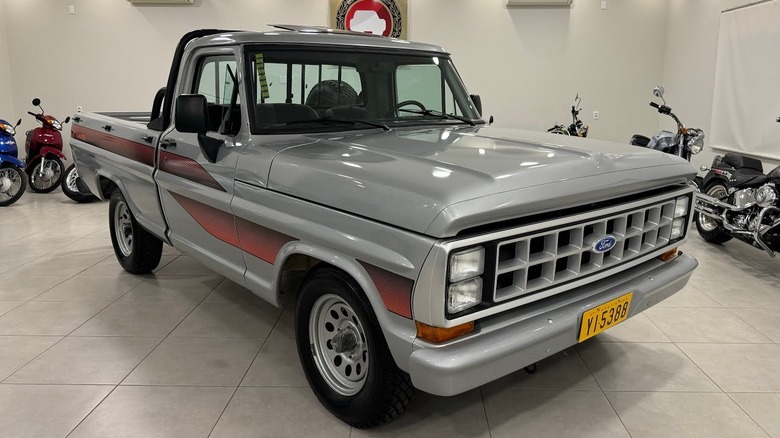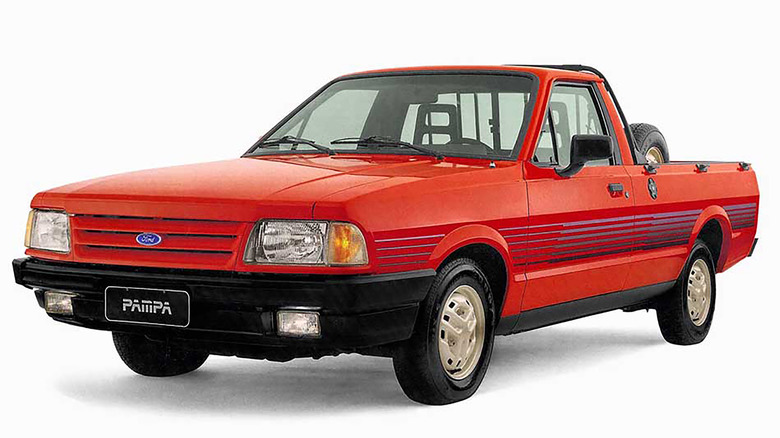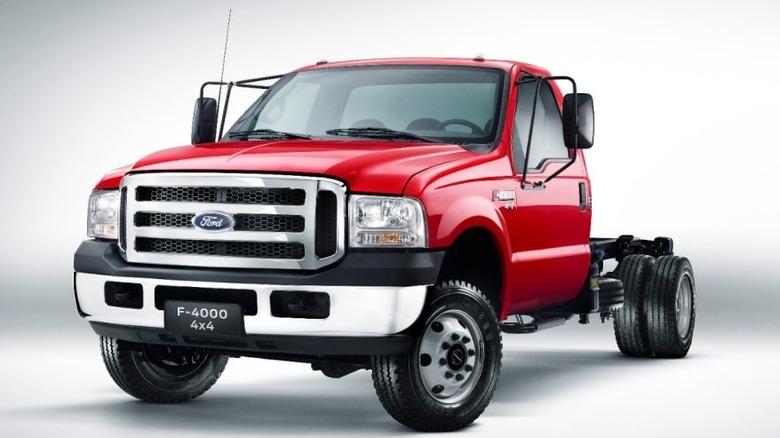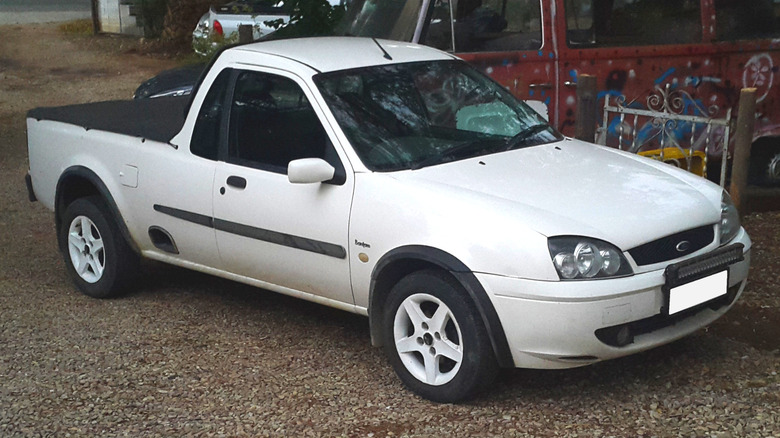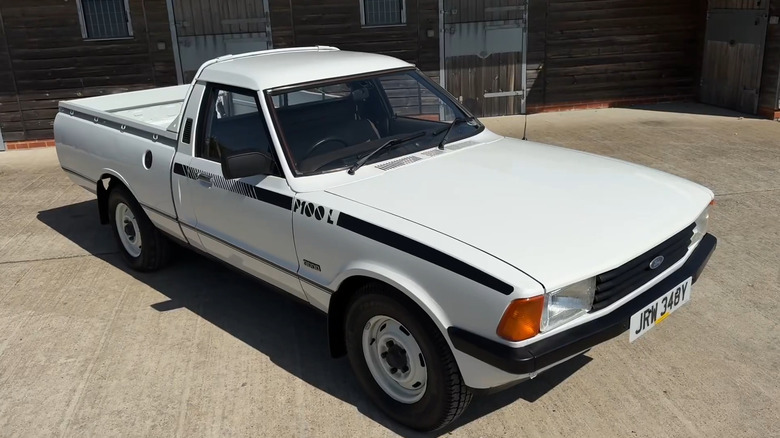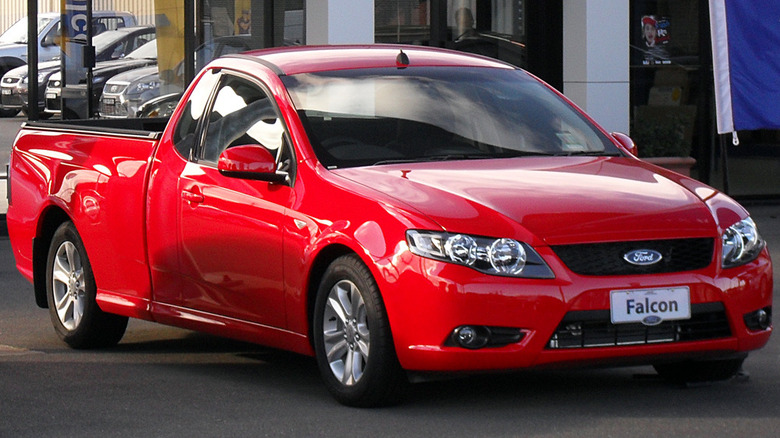Ford Truck Models That Were Never Sold In The US
The American automotive landscape isn't just about SUVs and sedans — pickup trucks make up a massive part of it. According to the Global Market Insights report, the U.S. pickup truck market was valued at $215.6 billion in 2024 and is expected to gain momentum, reaching $302.8 billion by 2034. This tremendous growth is largely attributed to brands shifting towards electric energy. For many Americans, a pickup truck is not only a vehicle — it is a versatile asset. Beyond every day commuting, it can also perform heavy-duty tasks such as towing boats, hauling trailers, or carrying large loads.
In contrast to the U.S., pickup trucks have never achieved the same popularity in Europe, where narrow streets and high fuel costs limit their appeal. The first pickup truck is credited to Henry Ford, who introduced the 1925 Model T Roadster with a pickup body — the first factory-built pickup truck of its kind. Ford is also credited with popularizing the term "pickup." Since then, this segment has evolved dramatically. While not every model has been pleasing to the eye, there are a lot of options available that have earned a reputation for being the most reliable.
Ford continues to offer a wide range of pickup trucks in the U.S., but interestingly, not every Ford pickup has been available stateside. Some models were sold exclusively overseas, where they found considerable success. This article highlights the Ford pickup trucks that U.S. fans never got to drive.
Ford F-1000
In the U.S. and North America, you might've heard a lot about the Ford F-150, F-250, F-350, and so on. However, you might've never heard of the Ford F-1000, and that's because it was an F-series Ford pickup truck meant only for Brazil. The Ford F-1000, which arrived in Brazil in 1979, used the body and chassis of the fifth-generation Ford F-250, with an increased load capacity of 1,000 kg, a little over 2,200 pounds. Interestingly, while Ford ceased the production of the fifth-generation F-250 in 1972 in the U.S., its body continued to be used by Ford in Brazil until 1992.
Out of the factory, the F-1000 was offered only in regular cab configuration and only with rear-wheel drive. The 1979 model came with a 3.9-liter four-cylinder engine that produced 86.4 hp. Since Ford increased the load capacity to 1,000 kg, the suffix '1000' was added. In 1985, Ford introduced the F-1000A, featuring a 6-cylinder engine compatible with methanol. Later, Ford added a four-headlight with some interior updates in 1986, and in 1991, the four-cylinder engine received an intercooled turbo that pushed more horsepower, 119 hp to be exact.
The second-generation F-1000 launched in 1992 and introduced multiple changes to counter the competition from the Chevrolet D20, with the four-wheel drive option arriving in 1993. The F-1000 nameplate continued to exist for a few more years, after finally ceasing production in 1998, being replaced with the locally produced F-250.
Ford Pampa
Brazil saw Ford launch several pickup trucks, but the credit for the only light pickup truck with four-wheel drive goes to the Ford Pampa. Ford built the Pampa from 1982 to 1997, and this truck was based on the Ford Corcel II, which was nothing but the Renault 12 with the Ford nameplate. Pampa was launched as a compact two-seater pickup truck, and its impressive fuel economy and low maintenance expense made it suitable for workers and everyday commuters. It was powered by a 1.6-liter engine, which produced 67 hp and was coupled with a five-speed gearbox.
Since it was a light pickup truck, the load capacity was limited to 1,300 pounds, including the weight of the driver. To make the chassis of the Corcel II hold that much load, Ford increased the ground clearance by 1.1 inches and used larger tires. In 1986, the Pampa received several upgrades, such as power steering and seat adjustments with the GL model. Thanks to the partnership between Ford and Volkswagen, the Pampa received an engine upgrade, using the more powerful VW AP-1800, the same engine as the Saveiro. This helped the Pampa produce 92 hp.
Pampa was also available in a four-wheel drive option starting in 1984, not offered by any other light pickup truck at that time. However, the 4x4 model could never reach the sales figures of its 4x2 siblings. In 1992, Ford tweaked the front grille of the Pampa, which was close to the look of the Del Rey, and in 1994, it added an electronic carburetor to its 1.8-liter engine. Ford continued producing the Pampa until 1997, which was also the year when the electronic injection system was introduced.
Ford F-4000
Another solid F-series truck that the Americans did not get was the Ford F-4000. This pickup truck was built for Brazil and Argentina. The F-4000 was first launched on May 25, 1975, and has been Ford's best-selling pickup truck in Brazil ever since. The truck became a success because of its versatility, durability, ease of maintenance, and also the options to use it for different purposes, such as refrigerated vans, gas delivery, box trucks, etc. Because of this, the pickup truck was widely used for heavy-duty tasks such as agriculture, construction, and cargo transport.
Over the years, the Ford F-4000 received several upgrades, including changes to its cabin design, engines, drivetrain options, etc. In 2008, Ford also started selling the extended chassis version of the F-4000, which is about 24 inches longer than the standard model. It was showcased at various Brazilian agribusiness fairs and pitched as a do-it-all truck.
The F-4000 was produced from 1975 to 2019, which is when Ford decided to shut down operations in South America. The company stopped production at its Sao Bernardo do Campo plant in Brazil, which was the plant responsible for the production of the Ford Fiesta, F-4000, F-350, and the Cargo lineup. With this, the Ford F-4000 became one of the many Ford pickup trucks that never made it to the U.S.
Ford Bantam
The Bantam is a Ford model that never launched in the U.S. and was specifically meant for the South African market. Notably, Bantam is the longest-running model in Ford's South African portfolio. Ford launched the Bantam in 1983, initially based on the Ford Ikon and later on the Ford Fiesta. The Bantam was designed as a pickup truck that would fulfill the needs of both urban and rural environments. Its car-based chassis with bakkie configuration helped the vehicle offer a car-like driving experience. Soon after its release, the Ford Bantam, launched to replace the Ford Courier, became an instant hit.
The third-generation Bantam was equipped with 1.3-liter (81 lb-ft of torque) and 1.6-liter (101 lb-ft of torque) engines, and also a 1.8-liter (78 lb-ft of torque) diesel engine option, which offered decent power and good fuel economy. The Ford Bantam was available in multiple trims and styles, including standard cab and double cab. The truck had a payload capacity of 1,380 pounds, ensuring that delivery businesses and small business owners could use it to its full potential. It also provided the best-in-class leg, shoulder, and headroom and came with features such as bucket seats, AC, electric windows, and more.
In 2009, the model received a facelift and a new 1.4-liter diesel engine. The Ford Bantam bakkie was 60% locally made in South Africa and was available in multiple trim levels, such as XL, XLT, and XLE. But despite having good initial sales of around 650 to 700 units monthly, the car was discontinued in 2011 due to a gradual decrease in demand.
Ford Cortina 3000 Leisure Bakkie
Another South African Ford model that did not make it to the U.S. is the Ford Cortina 3000 Leisure Bakkie. Notably, the Leisure Bakkie was the higher trim model of the one-tonner Ford Cortina 3000 bakkie, which arrived in 1977. It was powered by the Essex 3-liter 6-cylinder engine and had a payload capacity of 1,000 kg (hence the marketing tagline "1-tonner"). In 1983, the Ford Cortina 3000 received a new, more refined, luxury trim — the Leisure Bakkie. The same year, Ford started using "Bakkie" officially in the title.
The Leisure Bakkie was powered by the same 3.0-liter Essex V6 engine but got a two-tone paint scheme, halogen headlights, a woodgrain dashboard finish, full carpeting, and a bench seat. This model was popular for its car-like driving and comfort, robust performance, and the versatility of serving both as a utility vehicle and a weekend leisure car. The brakes were solid, it could reach 60 mph in under 12 seconds, and the four-speed gearbox helped propel the car to reach a maximum speed of 105 mph, something exceptional for a utility vehicle at that time.
Interested buyers could also add the fiberglass canopy, which was available as an optional accessory. This powerful Ford pickup truck consumed 12.6 liters of petrol per 100 km, or about 3.3 gallons per 62 miles, when travelling at 60 mph. When driven at around 35 mph, the vehicle achieved a much better mileage, better than many of its competitors.
Ford Falcon UTE
Some vehicles are so deeply tied to a place that they instantly become their symbol. Such is the history of the Ford Falcon UTE. The original Falcon UTE was first launched in 1961 in Australia and had a great run for 55 years, until Ford decided to end its production in 2016, curtailing an iconic chapter in Australia's automotive history. Interestingly, the first Ford UTE vehicle was produced on a customer's request for a practical machine in 1934. The wife of a Gippsland farmer wrote a letter to the Ford Australia chief, Hubert French, asking for a versatile vehicle that could be used to "go to church on Sunday and a truck to take the pigs to market on Monday."
The very model is also considered the world's first true coupe utility car. However, the Ford Falcon UTE was a more modern, full-size pickup truck, based on the Ford Falcon sedan, specifically developed for Australia. Despite carrying the same UTE name, the 1934 and 1961 models were completely different, but continued to offer the versatility of passenger car comfort with cargo capabilities. The Ford Falcon UTE was produced at the Broadmeadows Plant 1 and Eagle Farm in Brisbane, which was later handled by the Broadmeadows Plant alone.
Notably, the final FGX model of the Ford Falcon UTE, built from 2014 to 2016 and powered by the 4.0-liter inline turbo six engine that produced 393.6 lb-ft of torque, was the fastest Falcon UTE ever produced.
